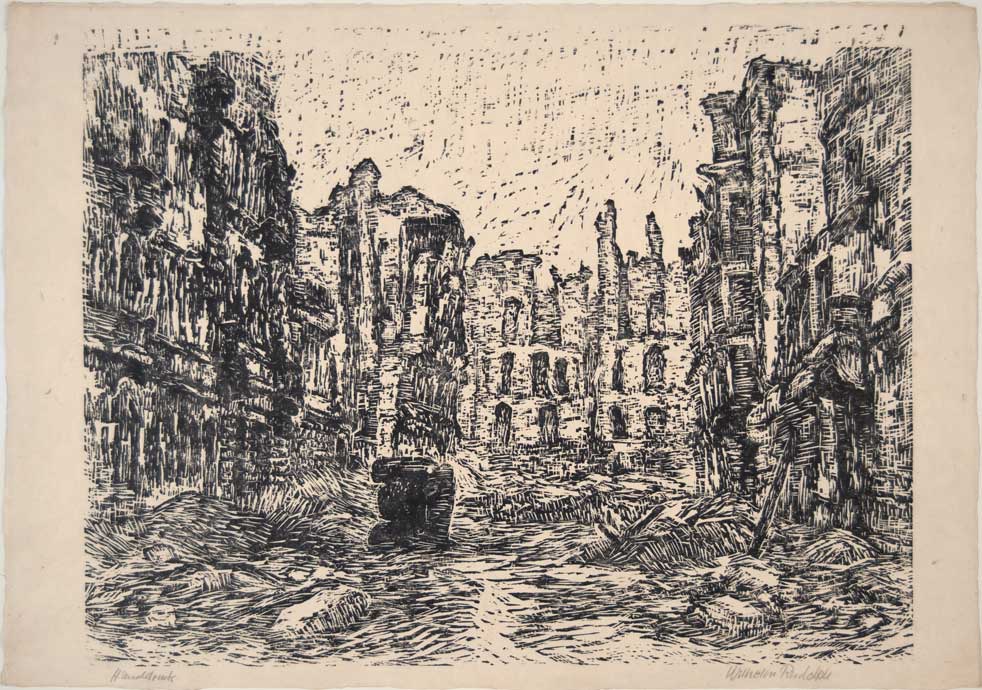Wilhelm Rudolph, Zöllner Straße, undated (after 1945), Staatliche Kunstsammlungen Dresden.
Wilhelm Rudolf (1889-1982) – draughtsman, printmaker and painter – witnessed firsthand the destruction of Dresden as it was the city where he studied and spent most of his life.
This picture is one of a series of drawings and prints that show a ruined cityscape, partially covered in snow. The sense of desolation is reinforced by the artist’s particular style of juxtaposing small, rapid crosshatching, without distinguishing between the motifs depicted. Thus, the sunless sky seems to merge with the rubble and the small number of fragile figures who venture into the destroyed city.
This cycle is the culmination of Rudolf’s work, which compulsively depicts the horror of destruction. In his memoirs, he describes the nightmarish atmosphere that prevailed at the time: “The emerging light of February 14, 1945, illuminated only a glowing, smouldering inferno on the Elbe, where Dresden had been the day before”.
Many other artists have chosen the destroyed city as their subject, especially since Dresden took a long time to rebuild. The ruins stood there for decades like the ghosts of a glorious past that had suddenly disappeared.
Sonia de Puineuf

